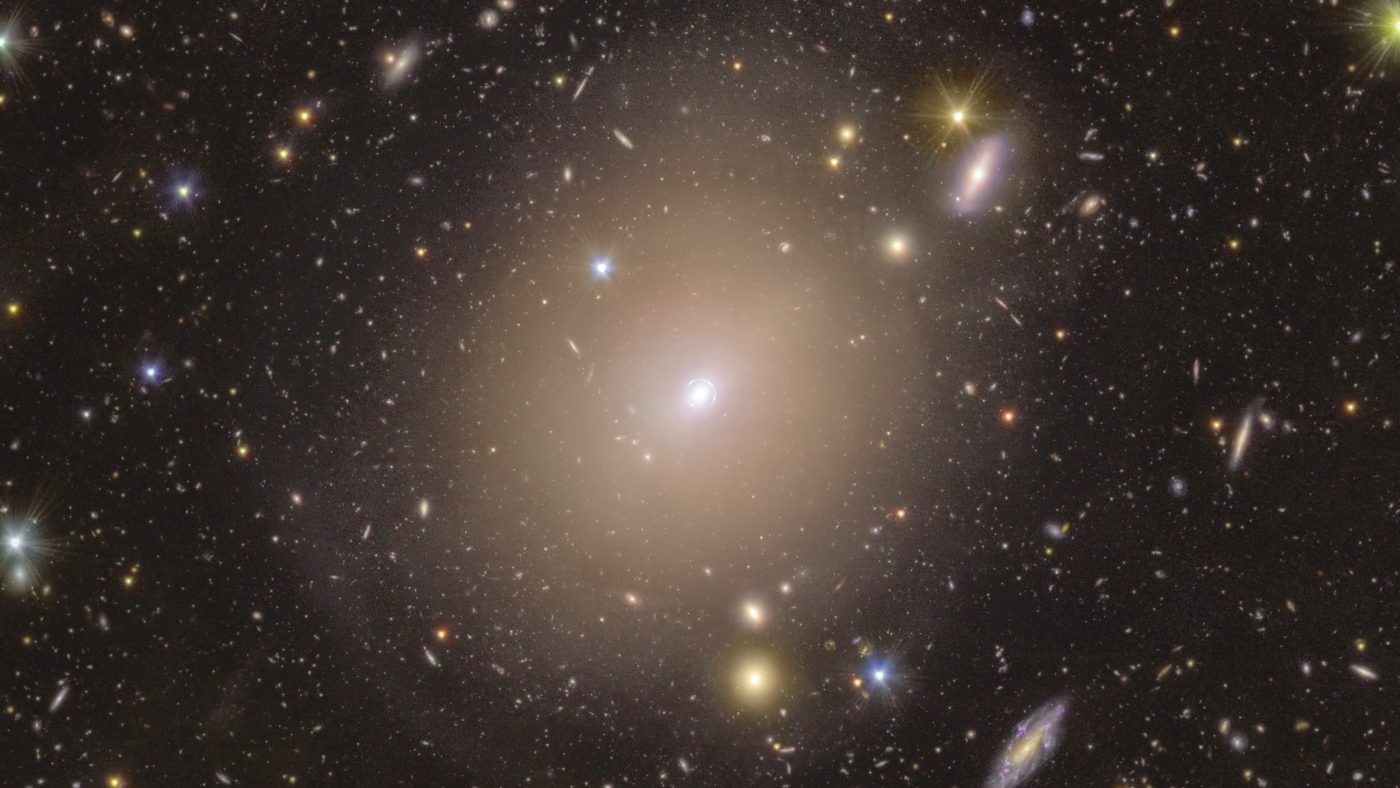

This image showcases a luminous ring encircling the center of NGC 6505, a nearby galaxy, as observed by the European Space Agency’s Euclid telescope.
Photo credit: ESA/Euclid/Euclid Consortium/NASA, processed by J.-C. Cuillandre, G. Anselmi, T. Li/European Space Agency
A remarkable discovery of a luminous ring enveloping a galaxy approximately 590 million light-years from Earth has been made by a space telescope, as announced by the European Space Agency on Monday. This finding is expected to shed light on various cosmic phenomena throughout the universe.
The ring, referred to as an Einstein Ring, was identified in September 2023 by Euclid, a telescope on a six-year mission dedicated to mapping the cosmos by investigating billions of galaxies. Images of the Einstein Ring depict a bright sphere at the center surrounded by a cloudy, illuminated ring.
This ring encircles NGC 6505, a galaxy that, despite being hundreds of millions of light-years from Earth, is considered relatively close by astronomers.
NGC 6505 has been under scientific scrutiny since the 19th century, according to Jacqueline McCleary, assistant professor of physics at Northeastern University. The recently identified Einstein Ring had previously gone unnoticed due to its subtlety, but the high resolution and sensitivity of Euclid made it possible to observe.
McCleary notes, “You’d expect that after decades of observation, we would comprehend everything there is to know about this galaxy. However, this Einstein Ring was essentially obscured by the brightness of the galaxy itself.”
The phenomenon, named after Albert Einstein, stems from his predictions on light bending as outlined in his theory of relativity. The first recorded Einstein Ring was identified in 1987, and numerous others have been observed since, although their total number remains unknown.

A detailed view of the Einstein Ring around NGC 6505.
Photo credit: ESA/Euclid/Euclid Consortium/NASA, processed by J.-C. Cuillandre, G. Anselmi, T. Li/European Space Agency
The Einstein Ring phenomenon occurs when light from a distant galaxy bends around a massive object, such as another galaxy or a cluster of galaxies, resulting in a visually striking ring formation, explains Mustapha Ishak, a professor of astrophysics at the University of Texas at Dallas. This alignment of light makes the ring distinctly observable.
Interestingly, NGC 6505 aligns with another unnamed galaxy, located 4.42 billion light-years away from Earth, which has yet to be observed, according to the ESA.
“The light appears as a ring because it converges at that particular point in a circular shape,” Ishak adds.
Einstein Rings cannot be detected with the naked eye and require advanced telescopes like Euclid to observe them. Their colors typically mirror those of the galaxies they surround, varying between white, yellow, blue, and red, according to astronomers.
The observation of an Einstein Ring represents a powerful example of gravitational lensing, a phenomenon where massive objects distort space and time, causing light to bend as it travels around the object, as described by Xiaosheng Huang, a physics and astronomy professor at the University of San Francisco. Huang explains, “This effect can create several types of image configurations, with the Einstein Ring being the most striking manifestation.”
The alignment producing the Einstein Ring is likely to persist, allowing astronomers to explore its characteristics further. Telescopes like Euclid are expected to enhance scientists’ understanding of dark matter, which exhibits gravitational effects yet remains invisible. McCleary expresses hope that these discoveries will unveil greater mysteries of the universe.
McCleary concludes, “We will be able to analyze ancient galaxies from the early universe’s history with unprecedented detail and in significantly larger quantities than ever before.”










